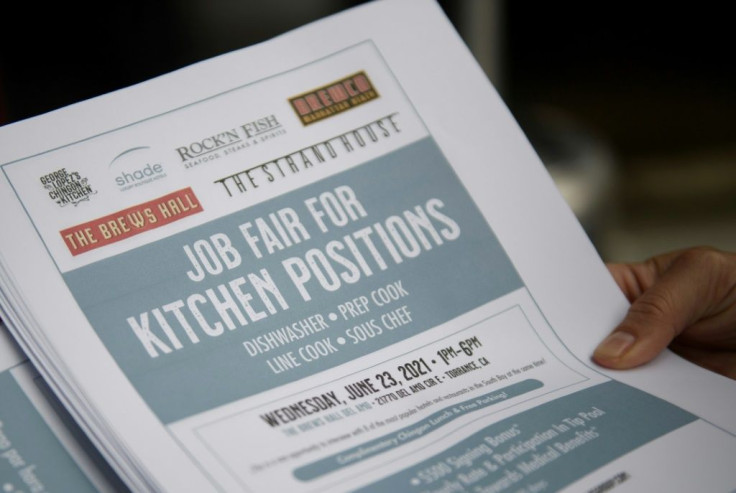US Jobless Claims Fall To Lowest Since March 2020
New applications for US unemployment benefits fell last week to the lowest since the pandemic lockdowns began, according to government data released Thursday, however the improvement came as many states cut workers off from aid.
President Joe Biden's White House cheered the data, released on the eve of the all-important June jobs report, which is expected to show an improvement from May even as businesses nationwide complain they are struggling to find workers in the scramble to get back to normal.
The Labor Department figures showed initial jobless claims dropped by 51,000 to 364,000 for the week ended June 26, the lowest point since March 14, 2020 when the US economy shut down to combat the spreading virus.
White House press secretary Jen Psaki noted that claims are at "the lowest level in 16 months and down more than half" since Biden took office.
"The President's economic plan is working: Unemployment and COVID-19 are down; and jobs, economic growth, and consumer confidence are up," she said on Twitter.
Still, the drop came as 22 state governments have terminated supplemental unemployment benefits early amid concerns the payments are keeping workers on the sidelines as businesses struggle to fill open positions. Another four states have announced plans to follow suit, although some face legal challenges.
As the US economic reopening has gathered momentum amid widespread vaccinations, the four-week moving average for initial claims continued its downward trajectory, dipping to 392,750 -- compared to 1.5 million in the same week of 2020, the report said.
"The key takeaway from the report is that it shouldn't be a surprise to see initial jobless claims falling given the huge number of job openings there are and the increased reopening activity that is demanding new hires," Patrick J O'Hare of Briefing.com said in an analysis.
However, claims for special aid for freelance workers not eligible for regular benefits -- Pandemic Unemployment Assistance (PUA) -- rose by nearly 3,500 to 115,267 in the week, the report said.
And there were still 14.7 million people receiving some form of benefits as of June 12, although that was less than half the 32 million total a year earlier, according to the report.

Ian Shepherdson of Pantheon Macroeconomics cautioned that the figures could be skewed by annual closures in auto factories which are hard to predict.
"It's possible, then, that the recent data signal a slowing in the trend rate of decline in claims, but these numbers are noisy and we aren't going to rush to judgment on the back of such a short run of data," he said in an analysis.
Still, most economists are projecting strong increases in hiring in the June report and beyond, with Oxford Economics on the high end, predicting a gain of 826,000 jobs.
"We look for the labor market recovery to gather momentum in the months ahead as constraints on labor supply recede and expect continuing claims will fall more sharply as the pace of hiring picks up," Oxford's Nancy Vanden Houten said, projecting the economy will create eight million jobs this year.
However, a private industry survey released Thursday showed the economic reopening has hit some speed bumps with is slowing manufacturing growth.
The Institute for Supply Management's (ISM) monthly manufacturing index slipped six-tenths to 60.6 percent, the lowest since January but still reflecting strong growth. Anything above the 50 percent threshold indicates growth.
However, the employment index fell to 49.9 percent, pointing to a slowdown in hiring after six straight months of increases.
Respondents "reported that their companies and suppliers continue to struggle to meet increasing levels of demand," ISM survey chief Timothy Fiore said.
In addition, he warned that "worker absenteeism, short-term shutdowns due to parts shortages, and difficulties in filling open positions continue to be issues that limit manufacturing-growth potential."
© Copyright AFP 2024. All rights reserved.





















